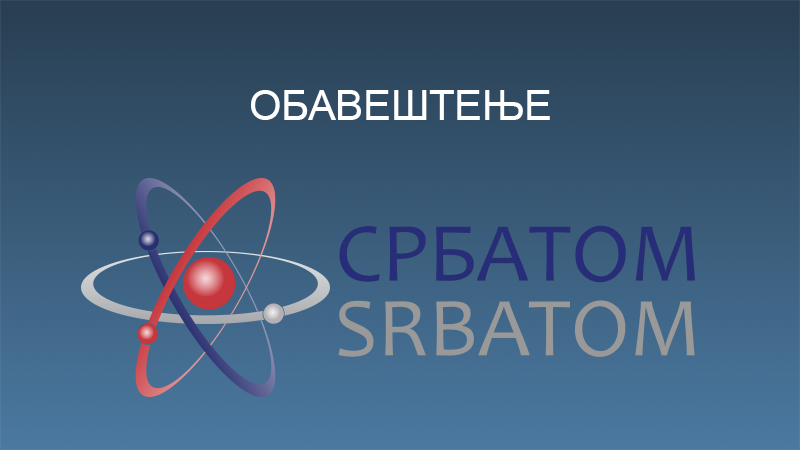In the light of the increased interest by the public in the circumstances surrounding the incident at the border crossing point in Bezdan of 04 March 2023, Serbian Radiation and Nuclear Safety and Security Directorate issues the following statement:
On 04 March, on Saturday night, the radiation and nuclear safety and security inspection from the Directorate received the information that the custom officers and the border police had detected the elevated radioactivity levels in one passenger car at the border crossing in Bezdan. On Sunday, 05 March, the inspection had an extraordinary on-site inspection oversight and confirmed this was the case of a radiation source from a radioactive lightning rod. In accordance with its statutory powers, the inspection engaged the Vinca Institute of Nuclear Sciences as the authorized legal entity, which placed the subject source under control and further storing in the central radioactive waste storage in the PC Nuclear Facilities of Serbia. The additional measurements confirmed that, after the removal of this radioactive source, there were no traces of additional contamination in the vehicle and the location.
The Directorate currently cannot give any further information on the subject case so as not to disturb the investigation and to ensure that the law enforcement agencies can undisturbedly perform their duties.
Radioactive lightning rods were installed in the former SFRY in the 1960s and the 1970s on a large number of public institutions, commercial and industrial facilities and locations, and residential buildings as well. At the time, the installation of radioactive lightning rods within the lightning protection system was a common practice. The manufacture of sealed radiation sources for radioactive lightning rods started in the 1960s in the Vinca Institute of Nuclear Sciences. Initially Co-60 sources were incorporated in the lightning rods, which were later, during the 1970s, replaced by Eu-152 and Eu-154 sources. These sources were then incorporated into three different types of lightning rods that were assembled in three firms in Serbia.
Bearing in mind the recommendations from the expert international bodies and organizations in 1981, any further installation of the radioactive lightning rods was forbidden by the Law Ionising Radiation Protection and Safe Use of Nuclear Energy (“Official Gazette of SFRY”, No. 62/84) in 1984.
At the time of their installation, these radioactive lightning rods were deemed to be a very efficient protective tool against natural disasters. However, over the time, they proved to pose a potential risk for the environment and the health of people, especially in case of their fall or dismounting by unauthorized persons. In addition, they have also been overcome by a technologically more advance and modern solutions to the lightning strike protection.
Radioactive lightning rods pose no threat to the environment if they are properly installed. If not placed in the intended position, a lightning rod can pose a threat to persons in its immediate surrounding or contact (accidental or intended, without knowing this is a radioactive source), and to the environment due to direct exposure to radiation or potential contamination in case of their loss of integrity. All properly dismounted radioactive lightning rods are kept in the centralized radioactive waste storage.
Thus, these lightning rods can also pose a threat to the environment and the health of people if handled by unauthorized persons or improperly kept outside the specialized storages.
It is estimated that in the Republic of Serbia there are the remaining 570 odd radioactive lightning rods, most of which, some 80%, are placed on the roofs and the land of industrial and agricultural facilities, while the rest is on residential buildings and public institutions. Most of these radioactive lightning rods, however, are on the industrial and agricultural facilities and locations belonging to the liquidated or wound-up legal entities that ceased their business. As a result, the Directorate has launched several initiatives serving to dismount and remove all the remaining radioactive lightning rods in the Republic of Serbia.
The Law on Radiation and Nuclear Safety and Security prescribes that the owners of cadastral parcels and the facilities with the radioactive lightning rods are responsible for their removal. This Law also prescribes that the lightning rods are to be removed by the authorized licensees at the request of the above owner. The owners of the cadastral plots and the facilities also bear all the costs resulting from the lightning rod dismounting and removal. In cases when the owner of the cadastral plot or a facility is not known or ceased to exist, these resources are provided from the budget of the respective local self-government units.
Considering the fact that the installation of the radioactive lightning rods is forbidden, for the past decades, the Directorate has initiated several campaigns to remove all the remaining radioactive lightning rods from the residential buildings and some public institutions. Comprehensive activities in this regard were conducted in residential and public facilities in several major cities in Serbia. The activities were organized by the local self-government units, but in some cases, only certain parts of the cities were included in the activities, which means that only the lightning rods known to the local self-government units to date were dismantled and removed. In case of the radioactive lightning rods placed on the industrial facilities, their removal was financed by the owners of the facilities, but, unfortunately, these can still be found on their roofs or the land next to them.

